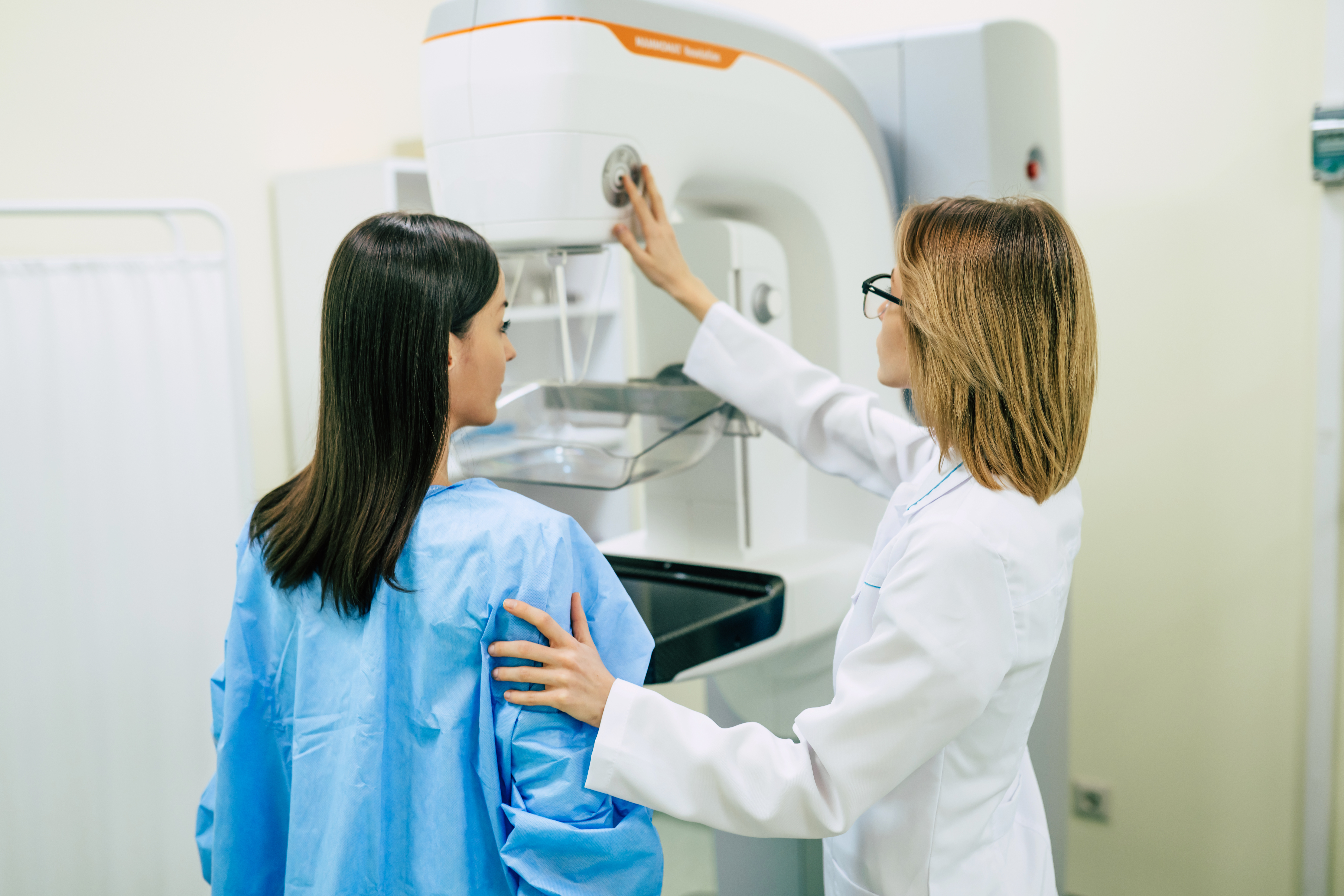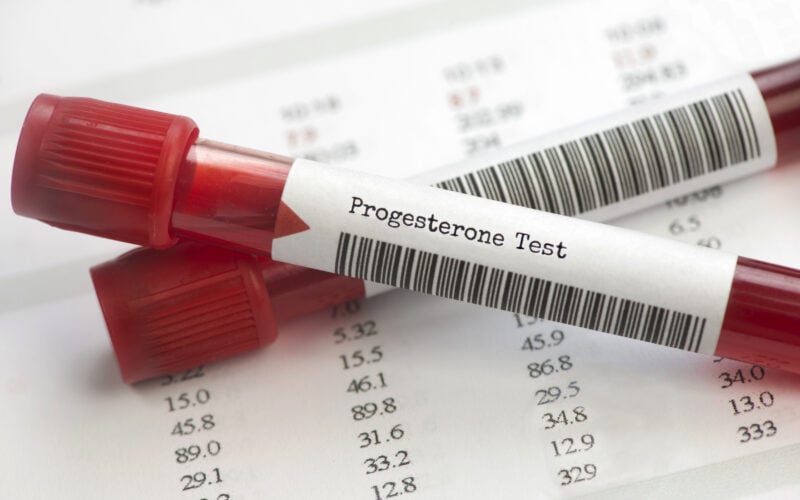In this latest installment of our FAM Basics series, we’re discussing the female hormone progesterone. Previously, we discussed the quintessentially female* hormone estrogen—the female hormone everyone seems to know about. But the lesser-known progesterone is just as important to the functioning of women’s bodies. In fact, the two hormones work together in a “yin-and-yang” fashion within the female body. For example, while estrogen contracts the uterus, progesterone relaxes it. Estrogen elevates blood sugar, while progesterone normalizes it. High levels of estrogen increase anxiety, while progesterone decreases anxiety and supports sleep and relaxation. Suffice it to say, a woman’s body needs both of these hormones in the proper balance to be able to function optimally. In particular, understanding the role that progesterone plays in my reproductive health was critical to getting the care I needed to heal my cycle and improve my overall health and wellbeing.
(*Men’s bodies actually produce some estrogen, too! But much less than women’s bodies do.)
What is progesterone, and what does it do?
Like estrogen, progesterone is produced by the ovaries. More specifically, it’s released by the corpus luteum (hence the term “luteal phase”), the structure formed by the ovarian follicle after it releases an egg (what we call ovulation). The release of progesterone by the corpus luteum helps to balance the effects that estrogen had during the first part of the cycle (aka, the follicular phase). It is therefore normal for estrogen to be high during the first half of the cycle (before ovulation) and low during the second half (after ovulation), while conversely, progesterone is low during the first half and high during the second half.
Importantly, progesterone maintains the endometrium (the lining of the uterus), preparing it for the implantation of a fertilized egg. As a result, adequate levels of progesterone are critical for sustaining a new pregnancy. Progesterone also stops the production of the cervical mucus that allows sperm to survive and reach an egg, replacing it with dense mucus that acts as a barrier to both sperm and microbes. The release of progesterone after ovulation is also responsible for the rise in basal body temperature that a woman can see if she is charting with a symptothermal method of fertility awareness. Finally, if your egg doesn’t get fertilized and implant by the end of your cycle, progesterone drops, triggering your period and the launch of your next cycle.
But progesterone doesn’t just act on the reproductive system. In fact, every type of brain cell has progesterone receptors, meaning that progesterone has a huge impact on our well-being. Furthermore, healthy levels of progesterone help to prevent endometrial cancer, maintain healthy bone density, and promote good sleep. Low progesterone can also contribute to premenstrual syndrome (PMS) and postpartum depression.
When progesterone levels are low
I know firsthand how important progesterone is, and what happens to a woman’s body (and health and wellbeing) when it doesn’t make enough.
I was diagnosed with polycystic ovary syndrome (PCOS) in 2018 by my NaPro gynecologist, who also diagnosed me with a deficient luteal phase. As I later learned when becoming a FEMM instructor, the phrase “deficient luteal phase” means that my body didn’t produce enough progesterone during the second half of my cycle (when, you’ll recall, progesterone is supposed to be dominant).
There are ways medical providers can work with women to increase their progesterone production. One is through lifestyle changes; for example, as author and fertility awareness educator Lisa Hendrickson recently said on her “Fertility Friday” podcast, “stress eats progesterone for breakfast,” so reducing your stress levels may improve your progesterone levels. Diet and nutritional supplementation can also make a big difference, although results do not come overnight.
But if diet and lifestyle changes aren’t enough, a provider may also prescribe bioidentical progesterone, like my doctor did for me. When prescribing the bioidentical progesterone, my doctor told me only to take it on certain days of my cycle—specifically during days three through twelve of my luteal phase.
Bioidentical progesterone is often used for women with low progesterone to support a pregnancy; in fact, a recent study found that taking progesterone can improve pregnancy outcomes for women with a history of miscarriage, making it vital that we test and treat women who have experienced miscarriage, and especially repeated miscarriage, for low progesterone. It’s also used to treat PCOS, PMS, infertility, and postpartum depression (PPD).
Bioidentical progesterone can be taken orally, but some women don’t absorb it fully when taken that way, and their progesterone levels will stay too low. In that case, a provider may tell the woman to take it vaginally, in the form of suppository capsules. For women whose levels of progesterone are extremely low or who have a high risk of complications like miscarriage or PPD, some providers recommend taking progesterone in an intramuscular injection rather than in a pill or vaginal suppository.
Is synthetic progesterone (aka progestin) the same as progesterone?
When my NaPro doctor prescribed bioidentical progesterone—and only for the part of my cycle when I actually needed it—it was a targeted approach that I wasn’t used to. Like many other women with irregular cycles, I’d long ago been prescribed the concoction of synthetic hormones that is the birth control pill, and had been told to take it every day.
Synthetic progesterone, or progestin, is used in birth control, often in combination with synthetic estrogen, to thicken cervical mucus and thin the endometrium, keeping sperm out and preventing an embryo from implanting in the uterus (if birth control fails to prevent ovulation, and the egg gets fertilized). While synthetic progestin does some of what natural progesterone does, it doesn’t act in all the same ways because it is chemically different from natural progesterone. Furthermore, the estrogen and synthetic progestin in the birth control pill won’t “regulate” your cycle—instead, they will override it completely.
Synthetic progestin can negatively affect mood and cholesterol levels, and when combined with estrogen (as in most birth control pills), synthetic progestin can counteract some of the beneficial effects of estrogen on the brain. In fact, synthetic progestin and estrogen can have “antagonistic” effects when given together.
Synthetic progestin was originally developed because early forms of natural (also known as bioidentical) progesterone had a short half-life and were expensive to produce. More recently, scientists have developed micronized bioidentical progesterone, which lasts longer and is absorbed better by the body. Most importantly, bioidentical progesterone offers the same benefits as the natural progesterone (also known as “endogenous” progesterone) your body produces, standing in opposition to synthetic progestin.
For example, while low progesterone can increase a woman’s risk for breast cancer, synthetic progestin does, too. In addition, the process of metabolizing progesterone makes your body release allopregnanolone, which helps decrease anxiety and depression and promotes good sleep. Synthetic progestin, however, does not release allopregnanolone, making it much less beneficial for your mental (and physical) health.
How do you know if you have low progesterone, and who (or what) can you turn to for help?
Unfortunately, not enough women know about the importance of progesterone to our health and our fertility, and many mistakenly assume that the synthetic progestins in their birth control do the same things that endogenous or bioidentical progesterone does. Given how common it is to simply prescribe birth control to teenage girls and women at the slightest sign of menstrual irregularity, I’m not even sure enough OB/GYNs know about the importance of properly balanced, endogenous progesterone. In fact, if your provider only tests your progesterone before you’ve seen signs of ovulation, find another provider! Your progesterone is supposed to be low before you ovulate, so you won’t find out if you have a problem. This could be a red flag that your provider does not understand the nuances of the menstrual cycle enough to competently diagnose you and get you the help you may need. For that, a provider trained in restorative reproductive medicine (like NaProTechnology, FEMM, or Neo) is often needed.
When my NaPro doctor explained my low progesterone-induced luteal phase deficiency to me, it made much more sense to only take the hormone that I was deficient in, and to only take it when I needed it. But to do that, I needed to learn to chart my cycle using a fertility awareness method.
Using a fertility awareness method to chart your cycle can’t, in and of itself, improve your progesterone levels if they’re low. It can, however, help you identify whether you might have low progesterone and help you and your provider find out for sure. Signs like a short luteal phase or tail-end brown bleeding (brown bleeding after the main flow of your period has resolved) can suggest low progesterone and are worth discussing with your provider. Then, if your provider decides to test your progesterone, he or she will do so on specific days of your cycle, aided by your chart. Finally, if you need to take bioidentical progesterone, you can use your chart to identify the days when you need to take it—and only when you need to take it—to maximally benefit your health.
Understanding your hormones can be life-changing
Knowledge is power, particularly when it comes to your health. Understanding your hormones enables you to manage your health and fertility and seek help when you need it. Charting your cycle can arm you with the information you need to manage your health and work with your provider to identify and treat any underlying issues you have, including low progesterone. Here’s to a healthy luteal phase and a happier cycle!
Additional Reading:
Progesterone Deficiency: How Too Little Progesterone Can Mean Big Problems
Progesterone Helps Prevent Miscarriage: Good News for Moms and Babies
How I Overcame Postpartum Depression with Bioidentical Progesterone
Study Suggests that Giving Progesterone to Women May Improve Chances of Having a Baby







